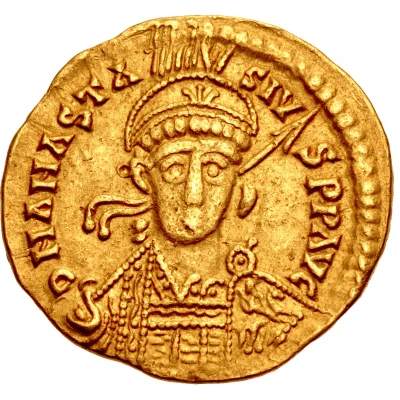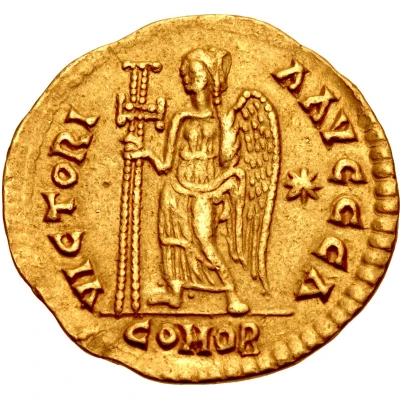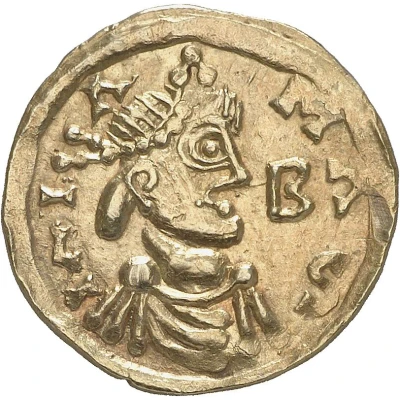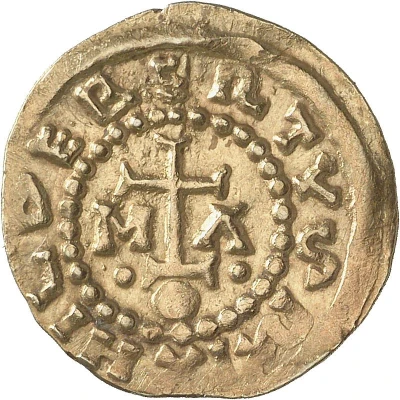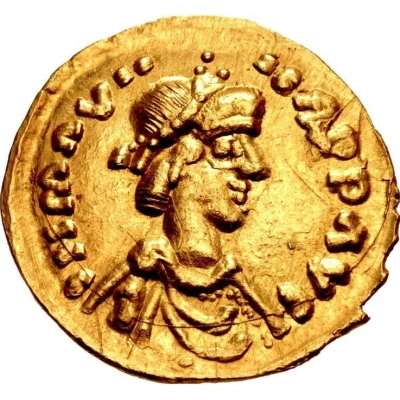
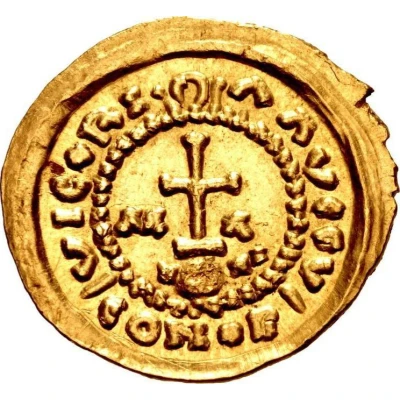

© Classical Numismatic Group, Inc.
Pseudo-imperial Solidus in the name of Maurice Tiberius Marseille
| Gold | 3.89 g | 22 mm |
| Issuer | Unified Frankish Kingdom (Frankish Kingdoms) |
|---|---|
| Type | Standard circulation coin |
| Years | 582-620 |
| Value | 1 Solidus |
| Currency | Tremissis (476-670) |
| Composition | Gold |
| Weight | 3.89 g |
| Diameter | 22 mm |
| Shape | Round (irregular) |
| Technique | Hammered |
| Orientation | Variable alignment ↺ |
| Demonetized | Yes |
| Updated | 2024-10-09 |
| Numista | N#194043 |
|---|---|
| Rarity index | 97% |
Reverse
Cross potent set on globe; M Λ flanking cross, X XI flanking globe; all within wreath.
Script: Latin
Lettering:
VICORI ౧ Λ ΛVCCV
CON OB
Unabridged legend:
Victoria Augustorum
Constantinopolis Obryzum
Translation: Victory of augusts.
Comment
"Since Marseille, with its valuable customs revenues, was often divided between several Frankish kings, the use of an imperial name may have been intended to avoid the awkwardness of naming only one among them; it certainly did not imply any temporary re-establishment of imperial authority in southern Gaul." Grierson, p.18Interesting fact
One interesting fact about this coin is that it was minted during a time of significant political and economic change in Europe. The Unified Frankish Kingdom, which was established in 561, was the first kingdom to unite the Frankish tribes and marked the beginning of a new era of political unity and cultural exchange in Western Europe. The Pseudo-imperial Solidus, which was minted in the name of Maurice Tiberius, was likely used as a form of currency for trade and commerce during this time. The fact that it was made of gold suggests that it was a valuable and highly sought-after coin, and its weight of 3.89 grams indicates that it was a substantial coin with a high level of craftsmanship. Overall, this coin provides a fascinating glimpse into the economic and political landscape of early medieval Europe.
